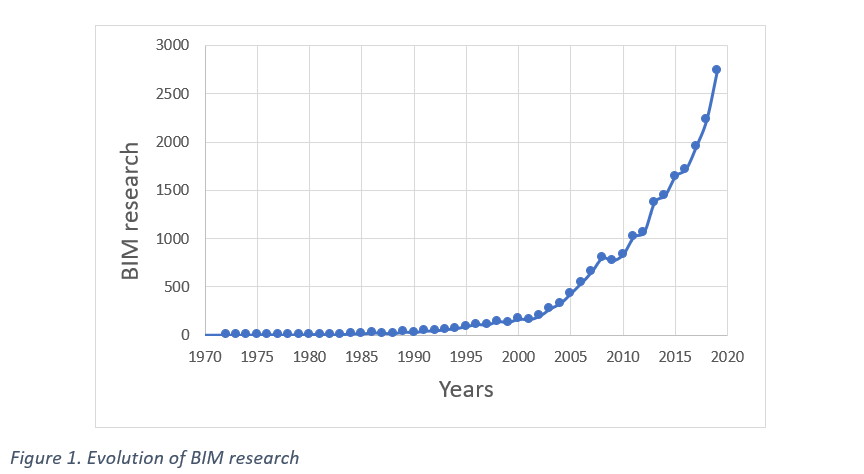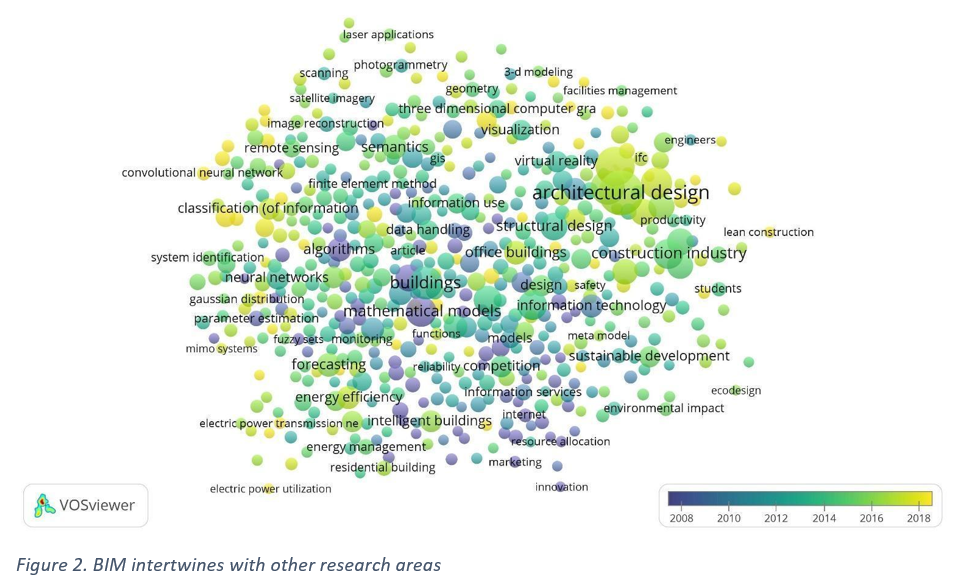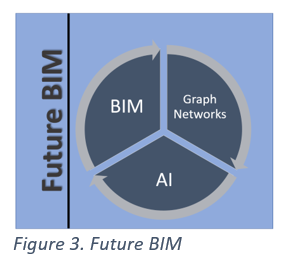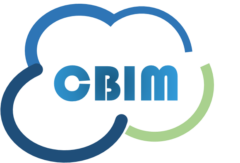



CBIM - European Training Network
BIM Research and Implementation RoadmapBuilding Information Modelling (BIM) has emerged as a paradigm shift in the Architecture, Engineering and Construction (AEC) industry towards its digital transformation. Given its importance and the increasing research interest, this blog explores BIM in terms of current research fields and challenges, as well as research trends and strategies to unlock its potential for implementation in the industry. I. BIM current research fieldsThe concept of BIM can be traced back to the 1970s (see our "BIM basics" blog post), and its relevance remains increasing since the beginning of the 21st century. To illustrate that Figure 1 shows the evolution of BIM research over the years. From early research on (i) three-dimensional building design and construction in the AEC industry to recent and innovative research on (ii) scanning and virtual reality, (iii) data handling and classification, (iv) BIM-based services and methodologies (e.g. facility and energy management, lean construction), and (v) advanced algorithms, Figure 2 further identifies the most relevant patterns on engineering-related topics based on an investigation of 1.266 articles including journals, proceedings and conferences.
Overall, the research of BIM has been currently focused on: i. Improving building design and construction processes, as well as obtaining high quality and performance building systems, ii. Re-creating and extracting object relations and features via image recognition of computer graphics, laser scanning, etc. iii. Enriching BIM models with semantics using geometric, topologic, geographic and asset management information, iv. Achieving intelligent built assets by leveraging building automation and control systems based on real-time sensor data monitoring, v. Integrating virtual and augmented reality with 3D building models.
II. BIM research challenges and trendsDespite recent advances in research of BIM, aspects as interoperability, interdisciplinary collaboration, design automation and optimization, code compliance verification, digital construction and automated acquisition of existing asset data are, to date, challenging issues that need to be overcome to fully exploit BIM applications in the AEC industry. To achieve that, common research trends will be focusing on:
The deployment of interoperable BIM tools to single cloud models with multiple domain representation can ensure reliable exchange of information and allow for the necessary cross-collaboration processes of the industry. 2. Semantic graph networks The evolution of information management from file-based tools to machine-readable model representations, such as static and dynamic data graph links, can improve the structure and consistency of BIM data models, enhance the performance of the entire life cycle of an asset and transform the data into business value. 3. Semantic enrichment The development of comprehensive semantic enrichment supports interoperability, as it adds meaningful domain-specific information to the data models, allowing BIM tools of different stakeholders to capture concepts inferred from both explicit and implicit information contained in the models. 4. Design automation, optimisation and compliance checking Higher levels of design automation can promote optimisation of resource usage, data consistency and error-prone mitigations. Moreover, design review-enabled tools can ensure data quality by verifying BIM models for complex code compliance. 5. Data fusion for digital twin construction project status assessment Data-centric construction leveraged by automated data acquisition from construction sites, processing functions and monitoring technologies can improve construction planning, control and performance. 6. Algorithms and pipelines for model acquisition The automated acquisition of data from existing building infrastructure with technologies such as laser scanning and videogaming (point clouds) based on algorithms and pipelines streamed together can allow for more efficient model acquisition performance.
III. BIM implementation challengesThe growing adoption of BIM has been supported by the continuing advancement of more efficient, connected and accurate application software, tools and servers, as well as the development of international standards. However, despite these efforts, there are still crucial barriers to the implementation of BIM in high demand, which are mostly based on people, process, technology and standards aspects (Figure 4). In terms of people, there is a lack of dissemination of the added value of BIM to clients and professionals, as well as a shortage of qualified personnel who can harness the use of BIM data to deliver efficient projects. In terms of process, there is an absence of suitable business models that support the market to access the potential of BIM-related innovations. In terms of technology, there is a recognised interoperability problem between the several existing applications in the industry, as well as a limited cross-domain collaboration, and poor information quality and accessibility. Finally, in terms of standardisation, there is a lack of harmonization of standards to define structures and workflows that can support BIM data exchange processes. To overcome these hurdles and extend the BIM adoption, despite technical challenges which are linked to the research trends previously mentioned, the following strategies are suggested:
Ultimately, the path towards the digital transformation of the AEC industry as a means of improving social, economic and technical challenges will come through a combination of people, processes, technology and standards efforts supported by both academia and industry.
Reference: [1] Sacks, R., Girolami, M., & Brilakis, I. (2020). Building Information Modelling, Artificial Intelligence and Construction Tech. Developments in the Built Environment, 4 (100011), 100011-100011. https://doi.org/10.1016/j.dibe.2020.100011 Sacks, R. 2020, Research Challenges, lecture notes, CBIM-BIM School, University of Cambridge, delivered 10 Dec 2020. This blog post was based on the BIM Research Challenges session given by Rafael Sacks during the Cambridge BIM School. |
|
|
 Flavia de Andrade Pereira Flavia de Andrade PereiraBIM Enrichment for inclusion of Building Automation System information |

Tawakalitu Odubiyi |
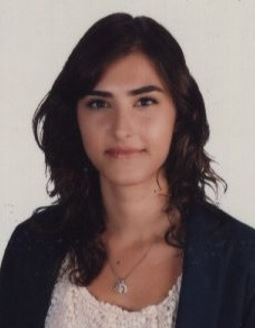 Duygu Utkucu Duygu UtkucuObject relationships detection and semantic enrichment |
